Abstract
1. Small-amplitude high-frequency longitudinal vibration (for example, 100 μ peak to peak amplitude at 250 c/s) was applied to the triceps surae muscle of the decerebrate cat without producing any appreciable change in its respiration.
2. Manual squeezing of the same muscle produced a large increase in ventilation.
3. As vibration is known to be a powerful stimulus for the primary endings of the muscle spindle it is concluded that these receptors are unlikely to have any significant role to play in the reflex regulation of breathing.
Full text
PDF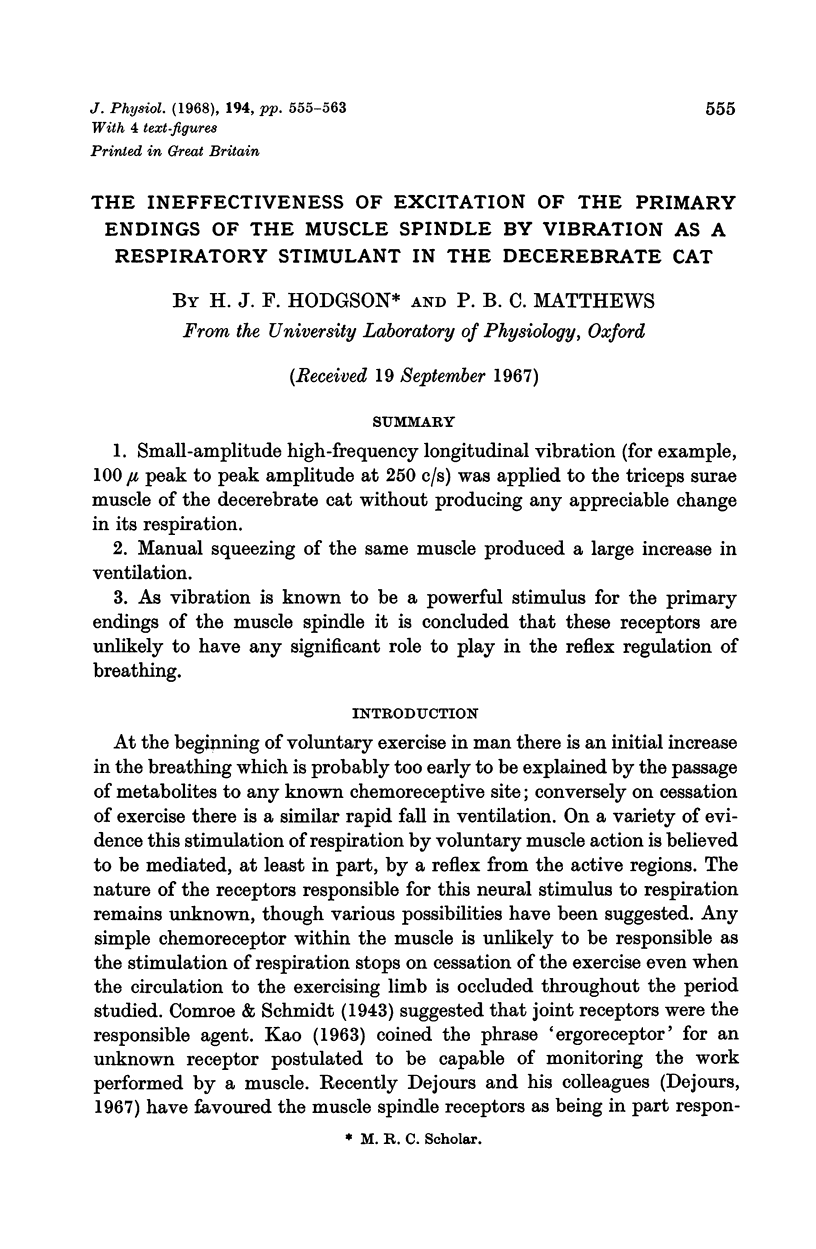
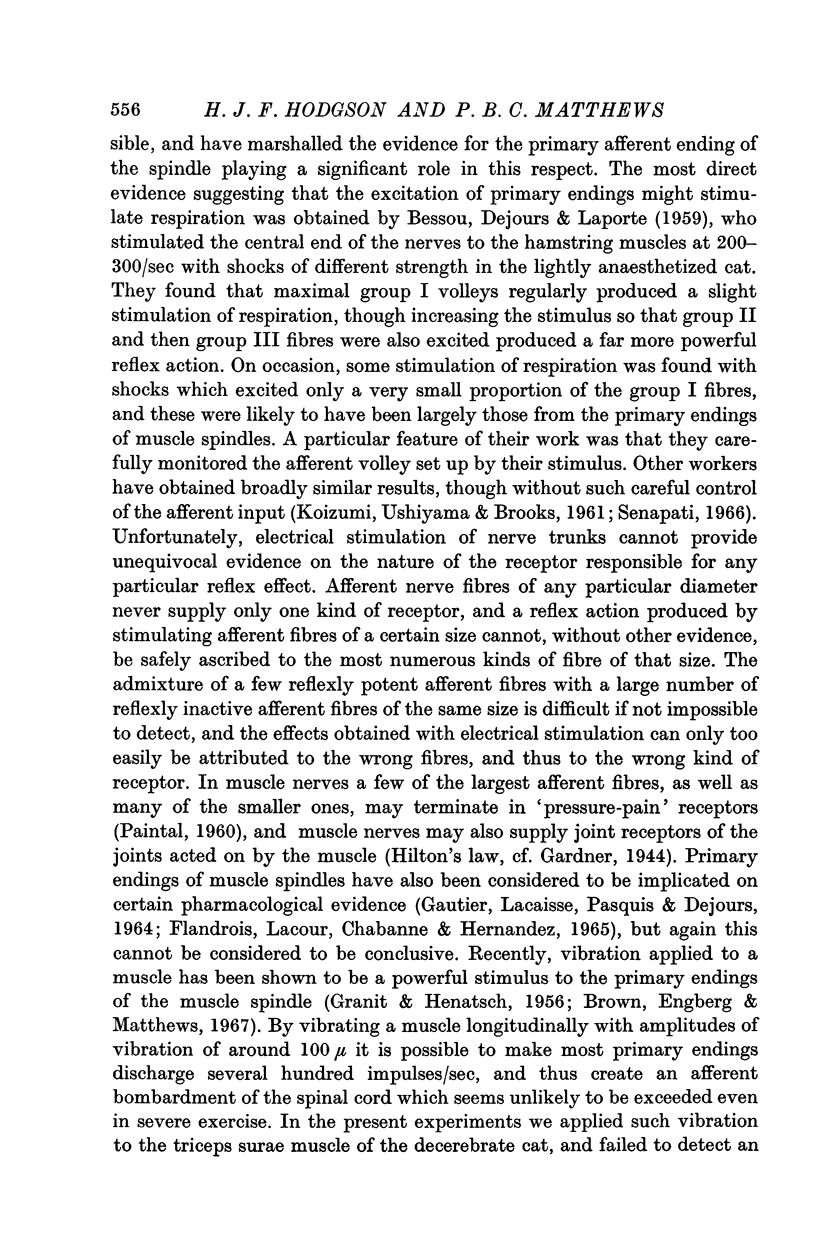
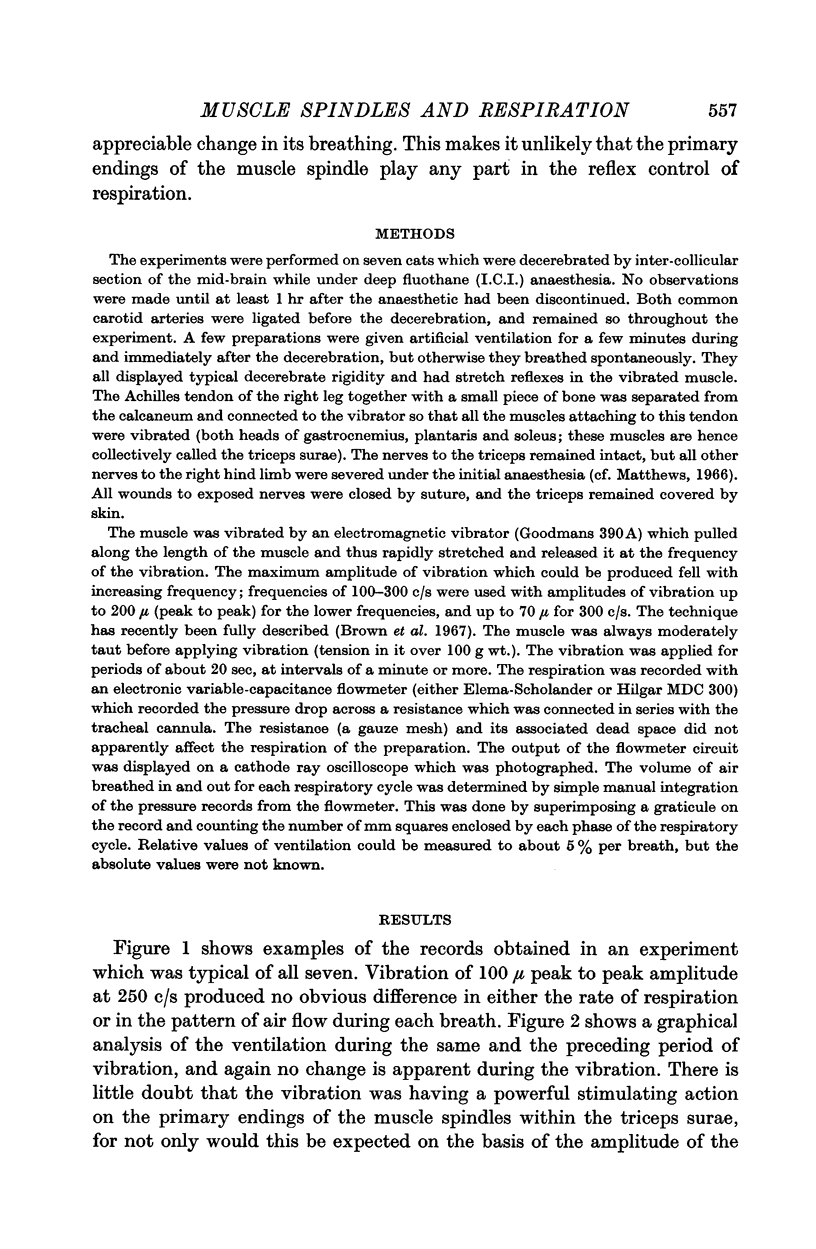
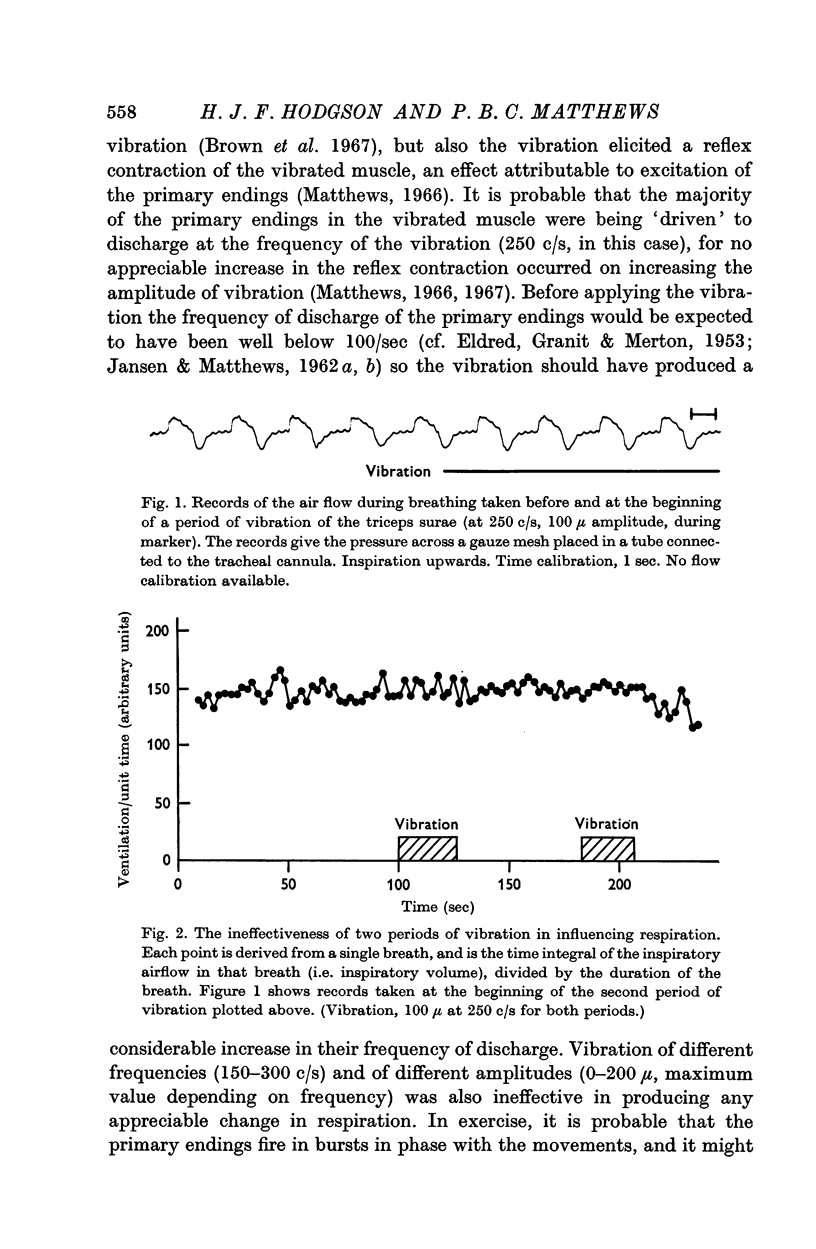
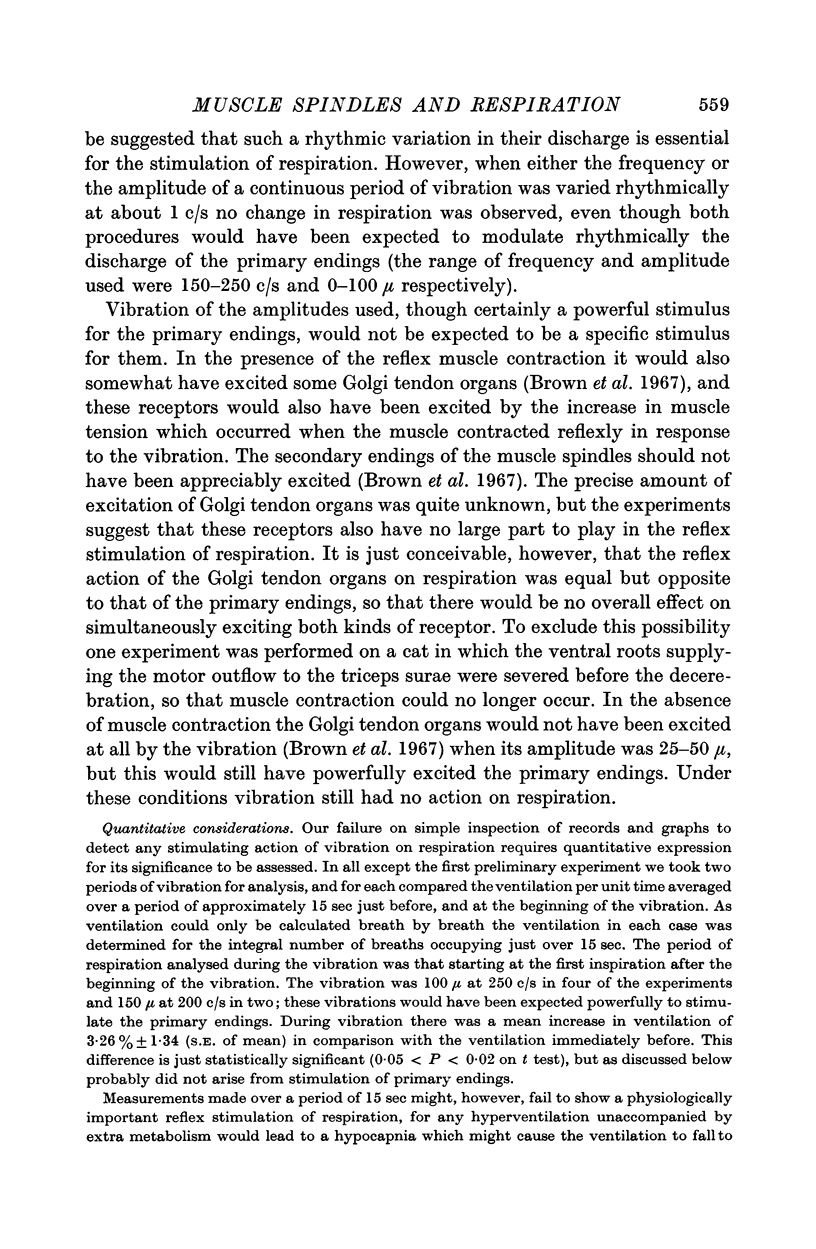
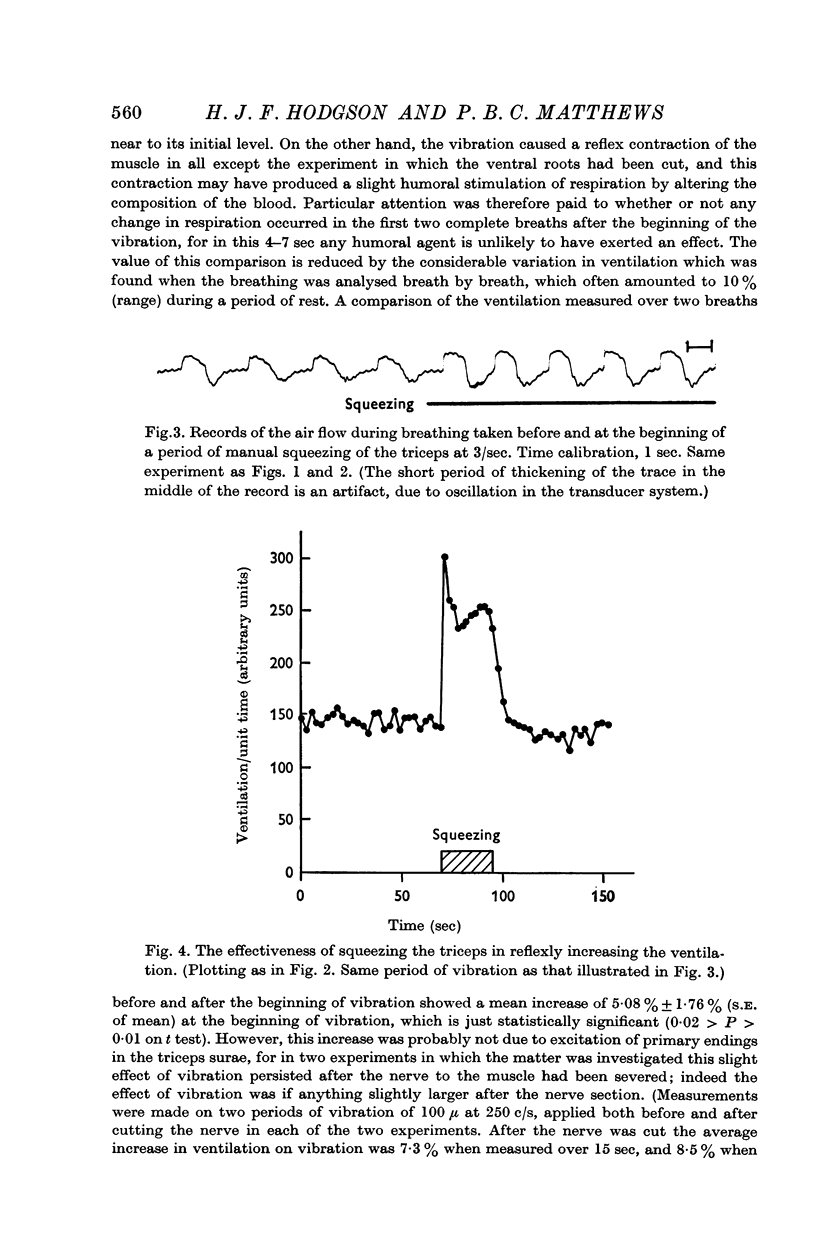
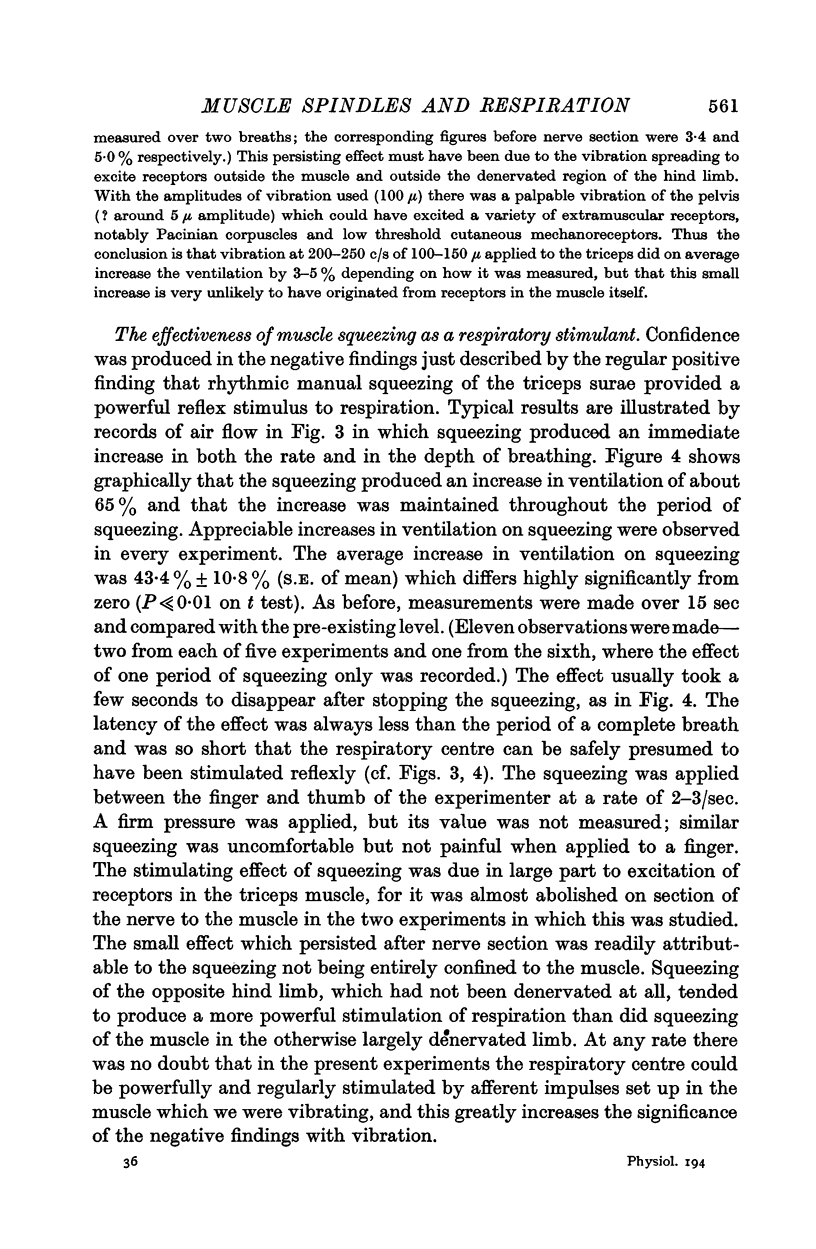
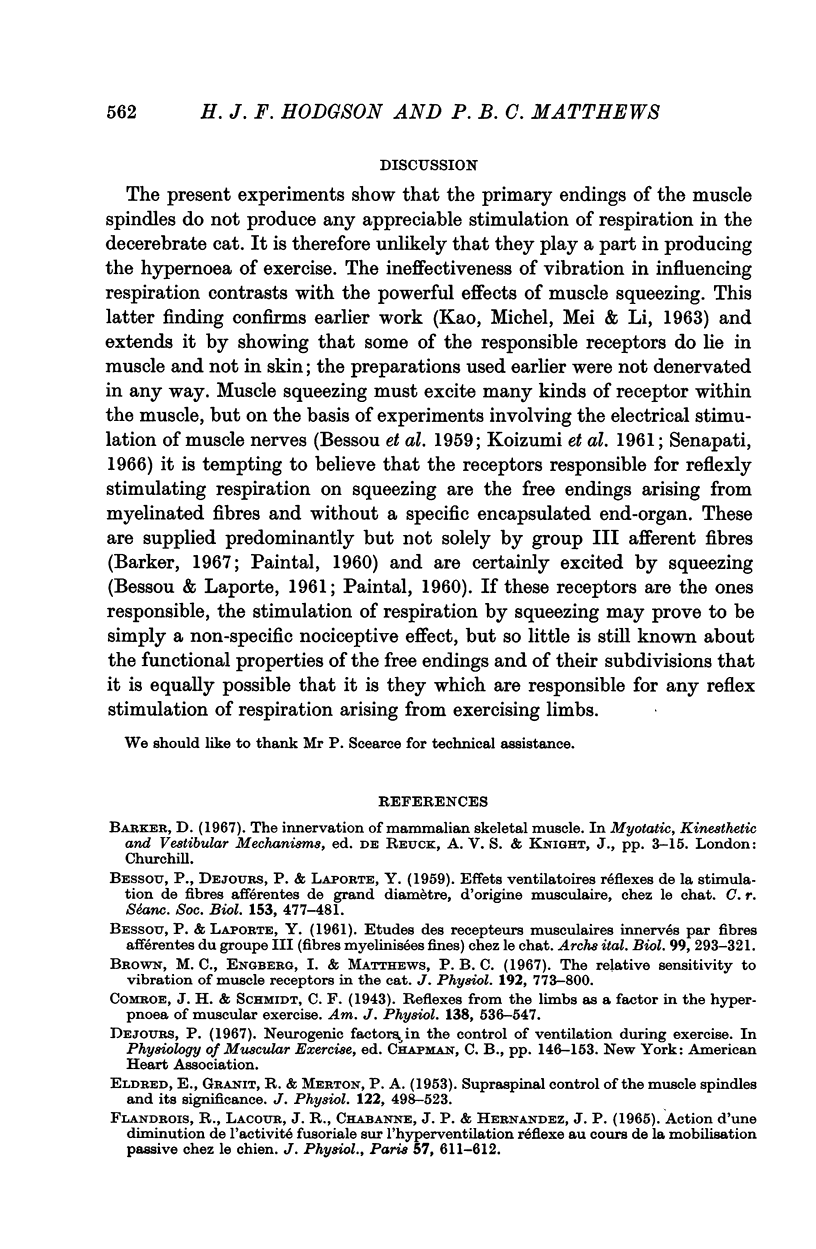
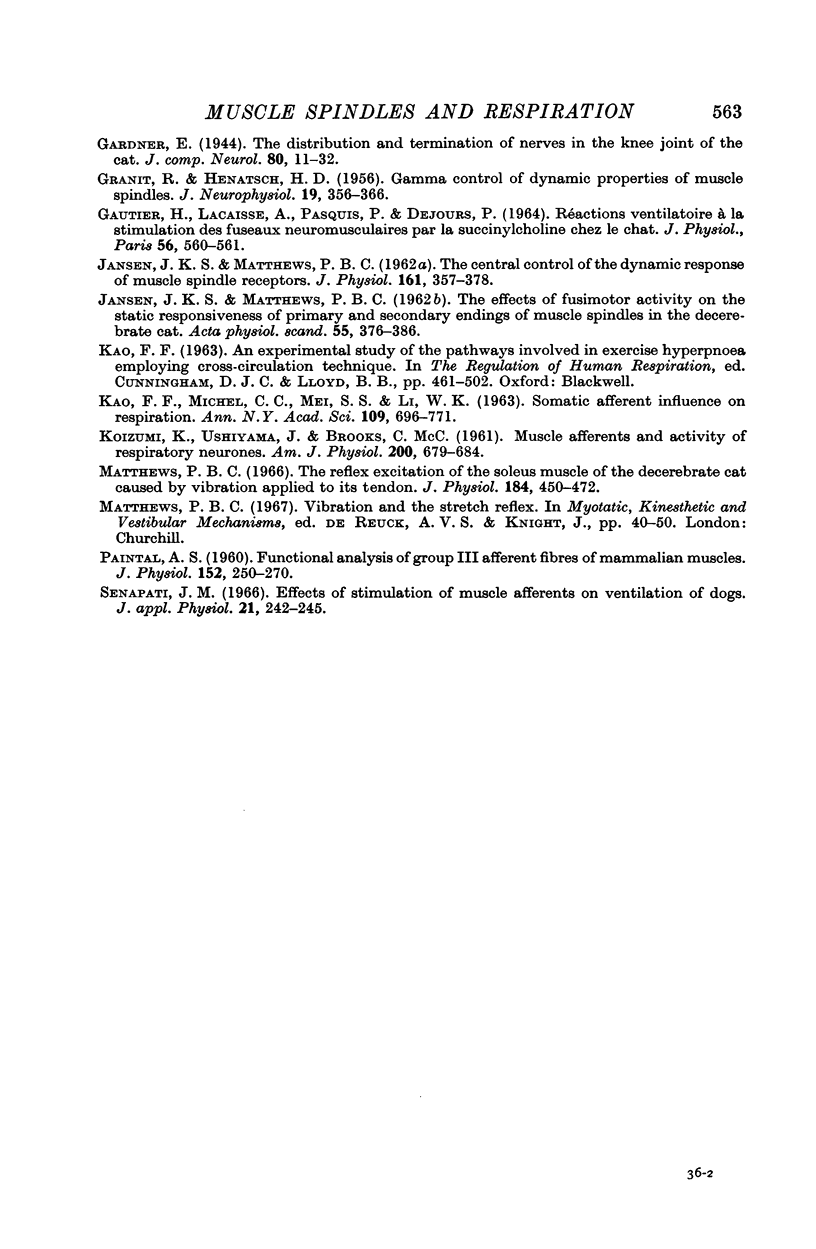
Selected References
These references are in PubMed. This may not be the complete list of references from this article.
- BESSOU P., DEJOURS P., LAPORTE Y. Effets ventilatoires réflexes de la stimulation de fibres afférentes de grand diamètre d'origine musculaire, chez le chat. C R Seances Soc Biol Fil. 1959;153(3):447–481. [PubMed] [Google Scholar]
- Brown M. C., Engberg I., Matthews P. B. The relative sensitivity to vibration of muscle receptors of the cat. J Physiol. 1967 Oct;192(3):773–800. doi: 10.1113/jphysiol.1967.sp008330. [DOI] [PMC free article] [PubMed] [Google Scholar]
- ELDRED E., GRANIT R., MERTON P. A. Supraspinal control of the muscle spindles and its significance. J Physiol. 1953 Dec 29;122(3):498–523. doi: 10.1113/jphysiol.1953.sp005017. [DOI] [PMC free article] [PubMed] [Google Scholar]
- Flandrois R., Lacour J. R., Chabanne J. P., Hernandez J. P. Action d'une diminution de l'activité fusoriale sur l'hyperventilation réflexe au cours de la mobilisation passive chez le chien. J Physiol (Paris) 1965 Sep-Oct;57(5):611–612. [PubMed] [Google Scholar]
- GRANIT R., HENATSCH H. D. Gamma control of dynamic properties of muscle spindles. J Neurophysiol. 1956 Jul;19(4):356–366. doi: 10.1152/jn.1956.19.4.356. [DOI] [PubMed] [Google Scholar]
- JANSEN J. K., MATTHEWS P. B. The central control of the dynamic response of muscle spindle receptors. J Physiol. 1962 May;161:357–378. doi: 10.1113/jphysiol.1962.sp006892. [DOI] [PMC free article] [PubMed] [Google Scholar]
- JANSEN J. K., MATTHEWS P. B. The effects of fusimotor activity on the static responsiveness of primary and secondary endings of muscle spindles in the decerebrate cat. Acta Physiol Scand. 1962 Aug;55:376–386. doi: 10.1111/j.1748-1716.1962.tb02451.x. [DOI] [PubMed] [Google Scholar]
- KOIZUMI K., USHIYAMA J., BROOKS C. M. Muscle afferents and activity of respiratory neurons. Am J Physiol. 1961 Apr;200:679–684. doi: 10.1152/ajplegacy.1961.200.4.679. [DOI] [PubMed] [Google Scholar]
- Matthews P. B. The reflex excitation of the soleus muscle of the decerebrate cat caused by vibbration applied to its tendon. J Physiol. 1966 May;184(2):450–472. doi: 10.1113/jphysiol.1966.sp007926. [DOI] [PMC free article] [PubMed] [Google Scholar]
- PAINTAL A. S. Functional analysis of group III afferent fibres of mammalian muscles. J Physiol. 1960 Jul;152:250–270. doi: 10.1113/jphysiol.1960.sp006486. [DOI] [PMC free article] [PubMed] [Google Scholar]
- Senapati J. M. Effect of stimulation of muscle afferents on ventilation of dogs. J Appl Physiol. 1966 Jan;21(1):242–246. doi: 10.1152/jappl.1966.21.1.242. [DOI] [PubMed] [Google Scholar]


